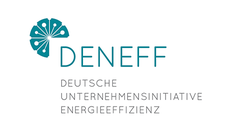Search eceee proceedings
Bottom-up methodology for assessing electrification options for deep decarbonisation of industrial processes
Panel: 4. Technology, products and system optimisation
This is a peer-reviewed paper.
Authors:
Holger Wiertzema, Department of Space, Earth and Environment, Chalmers University of Technology, Sweden
Simon Harvey, Chalmers University of Technology / Department of Space, Earth and Environment / Division of Energy Technology, Sweden
Max Åhman, Lund University / Department of Technology and Society at the Faculty of Engineering / Division of Environmental and Energy Systems Studies, Sweden
Abstract
Industrial processes currently account for a significant share (25–35 %) of the world’s total energy demand and related emissions. During recent years, the amount of low-carbon electricity from renewable energy sources (such as wind and solar) has increased continuously. There is therefore an increasing interest in electrification of industrial processes in order to achieve long-term decarbonisation goals.
Structural changes in the capital-intensive processing industry take a long time to implement. Furthermore, the number of possible technologies and systems for electrification of industrial processes is high, and different technologies and combinations of technologies will have different performance both in terms of economy and carbon footprint. For industrial decision-makers, it is important both to understand such systemic effects of electrification technologies and to discard low-performing candidates at an early stage. So far, studies on industrial electrification have focused on top-down approaches using explorative scenarios for analysing the consequences of a sector-wide full electrification assuming greenfield investments. There is a lack of studies adopting a bottom-up perspective for investigation of partial electrification options in brownfield investments at existing sites including process integration aspects and system consequences as well as the impacts on overall energy efficiency.
The objective of this paper is to propose a methodology for bottom-up assessments of industrial electrification options and to demonstrate this methodology with a case study. For this purpose, a bottom-up methodology that especially accounts for the systematic effects of increased electrification on a plant level was developed and then applied to the steam system of an oil refinery plant in Sweden. The results show that the energy and carbon footprint consequences of such measures are hard to predict without detailed modelling studies since industrial process unit operations are highly interlinked. Furthermore, the results from the techno-economic as well as carbon footprint bottom-up assessments can be used to compare electrification with other decarbonisation options and to formulate detailed roadmaps for decarbonization of energy-intensive industrial processes.
Downloads
Download this paper as pdf: 4-021-18_Wiertzema.pdf
Download this presentation as pdf: 4-021-18_Wiertzema_pres.pdf















